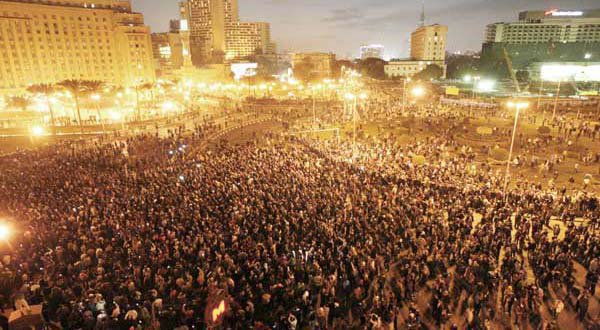Opposition
groups were inspired by the people of Tunisina's use of social media sites, such as Facebook and YouTube, to help end the rule of President Zine el-Abidine Ben Ali. They used Twitter, Facebook, and YouTube to spread awareness of their protest and eventually record the protest.
Access to Protests via the Internet
Shown above, protests in Cairo's Tahrir Square--a location similar to New York's Time Square--were captured in a stunning picture. Chaos in the streets were recorded and posted on YouTube:
Media Less Controlled, but Censorship Continues
After Mubarak stepped down, there is more freedom in the media, but censorship is still practiced and journalists and bloggers have been arrested. The media was often used as a form of propaganda during the Mubarak reign. During the mass protests, state TV fought against the pro-democracy activists, but after Mubarak fell, they sided with protesters. However, with violent riots later in the year, editors slid back to speaking against protesters attacked by the military.
On the other hand, some journalists continued to speak out even as they were targeted when covering events on the streets. Young journalist Wael Eskandar said he felt his profession had become "more meaningful." He also admitted to feeling freer, despite the obvious dangers of harassment and even prosecution by a military court. "At times like these, it's worth the risk," he said to The Guardian. The media revolution in Egypt is only beginning.

No comments:
Post a Comment